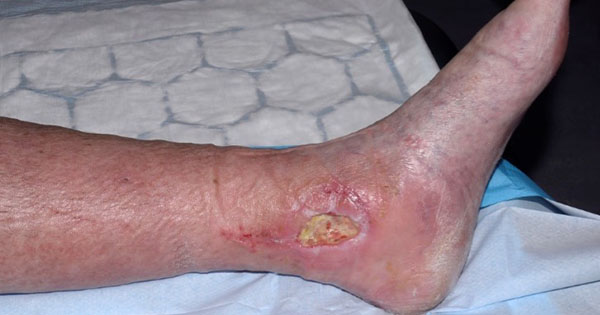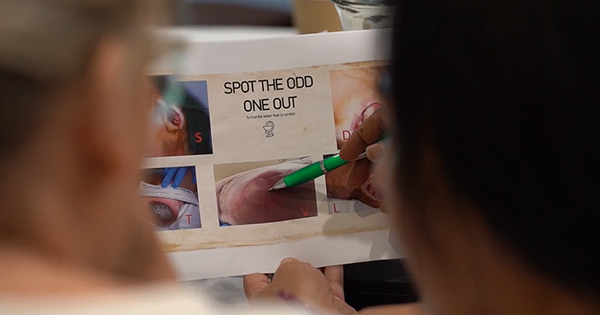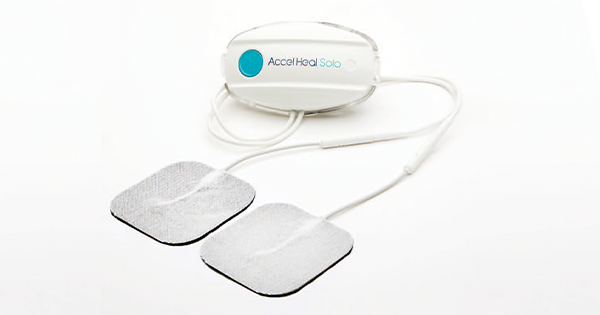The prevalence of chronic wounds has increased in recent years and has become a significant public health concern, consuming resources and effecting patients health and quality of life (Guest et al, 2015).
Patient-centred care that engages and educates patients about their condition and involves them in decisions about their health should improve outcomes (NHS Confederation 2012; Wounds International, 2016). Furthermore, it strengthens individual wellbeing and contributes towards more cohesive and healthier communities, encouraging individuals to take responsibility for managing their health needs where they are able to do so (NHS Confederation, 2012; Wounds International, 2016). A report by the Royal College of General Practitioners (2014) defines patient-centred care as:
- A holistic approach to care considering the individual’s needs as a whole rather than treating medical problems in isolation
- Flexible care, tailoring support to an individual’s personal priorities and individually defined outcomes
- A collaborative relationship between the patient and healthcare professional where the patients are encouraged to be equal partners in their care.
Alongside patient-centred care in leg ulcer management, there are a number of other factors and requirements that need to be considered. The literature shows evidence of effective outcomes by treating wounds for the underlying aetiology and associated causes, effective management of health conditions, and correct selection of dressings and treatments (Guest et al, 2015). However, one of the major obstacles to the delivery of effective treatment is the reluctance of some patients to adhere to the prescribed plan (Stanton et al, 2016), which means that patient-centred care is not always considered. Consideration for patient preference is emerging as a key component in the redesign of healthcare processes with the aim of improving outcome and safety (Fredericks et al, 2012). Patient-centred care is an important approach to the patient treatment pathways to improve the delivery of quality, safe and cost-effective services (Institute of Medicine, 2001; Epstein and Street, 2011). Historically, patient centred-treatment has focused on quality of life (QoL), pain, adherence and coping. Patient-centred care emphasises the importance of communication, partnership and health promotion along with an appreciation for the patients’ expectations, autonomy and beliefs. There are a limited number of qualitative studies that have reflected on patients lived experience of both the symptoms and QoL measures of those with leg ulcers (Moffat et al 2006), diabetic foot ulcers (DFU; Jaksa and Mahoney, 2010) and pressure ulcers (PU; Gorecki et al, 2009). These studies demonstrated common themes, which include pain, restricted lifestyle, loss of mobility, powerlessness and coping challenges. Healthcare provider solutions in patients with PUs have focused on alleviating the negative impact of distressing symptoms including improved care delivery, symptom control, patient education and social support (Spilsbury et al, 2007).
As healthcare professionals, improving our understanding of the patient’s perceived burden of illness is an important step toward patient-centred wound care. Corbett and Ennis (2014) state that the evolution from empathy to shared wound care decision-making is what many patients are asking for.
Vermeulen et al (2007) carried out a study looking at dressing preferences of patients, doctors and nurses. While the desired attributes were similar in all groups, (quickest wound healing, pain reduction and shortest hospitalisation time), patients also indicated some willingness to pay out-of-pocket costs for a dressing that would result in quicker, less painful wound healing. Moffat et al (2008), in a study looking at four-layer compression versus two-layer compression, found that patients prefer dressings that allow them to lead normal lives, in addition to healing faster.
Despite the findings from other studies on patient preference, Stanton et al (2016) found that non-adherence rates in chronic wounds remain a major problem and are similar to those in other chronic illnesses, at around 50% of patients (van Hecke et al, 2009). Mandal (2006) stated that there were a number of factors that could increase adherence. Among these are a therapeutic bond between the patient and clinician, where the patient believes the clinician has a sustained interest in understanding their problems, as well as treatment that can be fitted into the patient’s everyday life with little disruption.
The presence of oxygen increases the production of energy to fuel cell function and metabolism, angiogenesis, collagen synthesis and cross linking, re-epithelialisation and resistance to infection (Castilla et al, 2012). Chronic wounds are typically known to be in a hypoxic state (Yip, 2014), and while temporary hypoxia is required after tissue injury to trigger wound healing, prolonged or chronic hypoxia delays the healing process (Bishop, 2008; Rodriguez et al, 2008). The presence of biofilm creates a chronic inflammatory environment where neutrophils and macrophages from the immune system consume oxygen, leading to a wound with deficiency in oxygen supply to aid healing (James et al, 2016). By increasing oxygen levels, the wound healing environment can be improved, leading to a reduction in infection through the increased ability of white blood cells to kill and ingest bacteria (Gottrup, 2004). Correcting wound hypoxia also increases the healing response. If surgical or endovascular intervention is not possible, it is important that we seek other modes of oxygen delivery to aid wound healing in chronic wounds.
Aim
This paper describes two patients with chronic, complex, hard-to-heal wounds treated with a new form of oxygen therapy that was available at The Leg Ulcer Clinic of the Great Western Hospitals NHS Foundation Trust. The therapy has the potential to help maintain patient adherence through patient engagement and both of the selected patients highlighted the importance of being able to self-manage their wound care as much as possible, due to their busy lifestyles.
Methods
The leg ulcer Clinic evaluated the therapy on the two patients, both of whom had chronic DFUs. Diabetes affects the small arterial vessels causing distal disease and this, therefore, contributes to low oxygen levels in the wound bed. Furthermore, DFUs are often challenging to treat with open surgical or endovascular intervention therefore the decreased oxygenation at the wound bed remains a challenge.
Oxygen wound therapy (Natrox O2, Natrox Wound care) was made available for evaluation within the clinic–this therapy allows for the continuous administration of 98% humidified oxygen to be delivered directly to the wound bed. It is delivered by a small battery-powered electrochemical ‘oxygen generator’ and delivers approximately 13mLs of humidified oxygen per hour. It is delivered through a fine soft tube to a disposable delivery system that is placed directly over the wound and held in place with a conventional dressing. The oxygen generator is small enough to be carried in the patient’s pocket or secured close to the patient’s wound, making it portable. The simplicity of application of this form of oxygen therapy means that it is possible for patients to be actively involved and self-manage their wound care between specialist wound clinic appointments. This aids wound healing through improving patient adherence and increased oxygen levels.
Case 1
A 46-year-old man with type I diabetes, diagnosed at 4-years-old, recently had viral meningitis. Due to complication of diabetes, the patient underwent renal transplantation in 2001, which is now failing; he is potentially looking at a second transplant. In addition, he has had a pancreatic transplant.
He has medication-controlled hypertension and he is an occasional smoker. This patient suffers with high levels of stress as the primary carer for his two sons. He is also the owner of a company, which requires many hours of his time. This combination has resulted in a lack of adherence with dressing and clinic regimes in the past due to placing little importance and time on his own health.
In February 2018, the patient awoke with pain in his left hallux; at this point, there was no wound evident and after being seen by a rheumatologist he was treated for gout with allopurinol. Sometime between April and August 2018, he developed ulceration of his hallux following trauma, which failed to heal. He was seen by podiatric surgeons, trauma/orthopaedics and rheumatology. Thevpateint received different interventions from each of these teams including surgical debridement. Despite the wound bed appearing healthy with little slough following the debridement, there was no improvement in the condition of the wound. The adherence issues were evident as the patient was unable to attend regular appointments as a result of his social situation and therefore, he was spending much of the time self-managing the wound. In April 2019 he was referred to and seen in the Leg Ulcer Clinic, they began maggot larvae debridement therapy (Biomonde, UK) to deslough the wound, followed by a dressing regimen of promogran prisma (3M, UK) to maintain the improved wound bed to aid granulation and healing. Despite these therapies the wound remained static, with well-defined edges. The wound bed became pale and a recurrence of slough was observed [Figure 1a].
The patient began oxygen wound therapy (Natrox) to provide the oxygen to the wound bed and allow the patient to self-manage his dressing regimen. The oxygen therapy was applied directly onto the wound surface. Urgotul SSD (Urgo medical, UK) applied as a secondary dressing, for further antibacterial protection. Kerramax Care (3M) was applied as a superabsorbent layer to manage the exudate levels, which increases with the use of Natrox O2 due to the increased cellular activity.
Unfortunately, in the initial period there was little or no improvement in the wound due to the oxygen delivery system being applied upside down and the wound bed appeared paler with what appeared to be an increase in biofilm. However, once the error was noted and rectified, with the device being applied the correct way, there was a dramatic regression of the wound during the following 8-10 days.
Within six weeks of oxygen therapy the wound had progressed, having reduced in size by more than 50%. The wound bed was covered with what appeared to be some macerated tissue that was at this point left undisturbed to continue to heal [Figure 1b]. By week 16. the wound had all but healed, except for a small scab present that was left to lift alone [Figure 1c].
Despite the oxygen therapy being an advanced wound care product the simplicity of application meant this patient was able to be actively involved in the therapy. He was able to manage his wound care needs between specialist appointments making him actively involved in his treatment and this resulted in improved adherence to the treatment plan. The patient stated that the experience and outcome of therapy exceeded his expectations, even within the initial improvement period during the first six weeks. He had not experienced such a change in his wound during previous therapies and to then go on and achieve closure of this wound was the best possible outcome he could have hoped for.
Case 2
A 61-year-old man with a history of type II diabetes and cellulitis. He presented to the clinic with a chronic, hard-to-heal DFU on his left medial malleolus, which had been present for approximately six months before beginning oxygen wound therapy (Natrox O2).
His work is based in the US so he travels on a regular basis. He developed a swollen leg during a long-haul flight to China, which caused a blister that deteriorated and went on to become a wound. The patient was initially treated for the cellulitis and later referred to dermatology who then prescribed dermol for his skin, alongside his dressing regimen. However, the wound remained unchanged. Due to the patient’s history of diabetes, he was referred to the specialist ‘hot clinic’ where he underwent a venous and arterial duplex scan. The arterial scan was normal, however, the venous scan showed insufficiency. He underwent laser therapy and was placed in thigh-length compression hosiery. The wound was dressed with honey for a period of time, but still there was no improvement in healing [Figure 2a].
The patient was treated with oxygen wound therapy (Natrox O2). The wound was approximately 4.5cm × 2.5cm, with some small areas of granulation. It was predominantly covered with a layer of slough and no obvious signs of healing from the wound edges and the periwound tissue appeared healthy but dry. The oxygen delivery system was placed directly over the wound and Kerramax Care, was used as a secondary dressing to manage the increase in exudate as per the previous patient. He continued with the previously prescribed compression hosiery and due to the simplicity of this advanced therapy, it allowed the patient to self-manage with his dressings, which was important due to his regular travelling.
Within a month of beginning therapy, the wound decreased to approximately 4cm × 2cm, there was less slough present in the wound and the wound bed appeared healthy with evidence of granulation tissue [Figure 2b]. The wound continued to improve and decrease in size [Figure 2c], and achieved full closure after 20 weeks of therapy [Figure 2d].
Using oxygen wound therapy allowed this patient to maintain his independence and continue with his travel and work commitments without affecting the outcome. The visible improvement and decrease in the wound size provided positive feedback that encouraged him to remain adherent to the therapy.
Discussion
The use of oxygen wound therapy in these patients highlighted how easy it is to incorporate into clinical practice. Often when patients are receiving advanced therapies, there are restrictions on their ability to carry out their everyday living activities due to appointments for dressing changes. The simple application of the oxygen therapy system makes it easy to include the patient in their treatment, despite this being classed as an advanced therapy. By removing the involvement of healthcare professionals between specialist clinic appointments, both case could take responsibility for their treatment and monitor its effectiveness, helping to promote acceptance and adherence.
The treatment increases the oxygen at the wound base, which aids wound healing, and enables patients to maintain their independence and identity while receiving their treatment. The therapy has the potential to reduce the overall cost burden of a leg ulcer at the same time as achieving complete closure. It is recognised that this therapy may not be suitable for all patients to self-care. However, the overall impact of wound healing reduces the burden on an already overstretched service.







